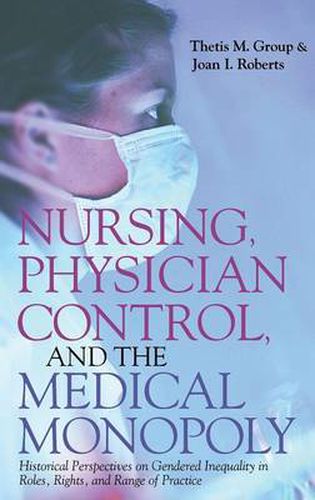Readings Newsletter
Become a Readings Member to make your shopping experience even easier.
Sign in or sign up for free!
You’re not far away from qualifying for FREE standard shipping within Australia
You’ve qualified for FREE standard shipping within Australia
The cart is loading…






This title is printed to order. This book may have been self-published. If so, we cannot guarantee the quality of the content. In the main most books will have gone through the editing process however some may not. We therefore suggest that you be aware of this before ordering this book. If in doubt check either the author or publisher’s details as we are unable to accept any returns unless they are faulty. Please contact us if you have any questions.
Nursing, Physician Control, and the Medical Monopoly traces the efforts by physicians over time to achieve a monopoly in healthcare, often by subordinating nurses - their only genuine competitors. Attempts by nurses to reform many aspects of healthcare have been repeatedly opposed by physicians whose primary interest has been to achieve total control of the healthcare system, often to the detriment of patients’ health and safety. Thetis M. Group and Joan I. Roberts first review the activities of early women healers and nurses and examine nurse-physician relations from the early 1900s on. The sexist domination of nursing by medicine was neither haphazard nor accidental, but a structured and institutionalized phenomenon. Efforts by nurses to achieve greater autonomy were often blocked by hospital administrators and organized medicine. The consolidation of the medical monopoly during the 1920s and 1930s, along with the waning of feminism, led to the concretization of stereotyped gender roles in nursing and medicine. The growing unease in nurse-physician relations escalated from the 1940s to the 1960s; the growth and complexity of the healthcare industry, expanding scientific knowledge, and increasing specialization by physicians all created heavy demands on nurses. Conflict between organized medicine and nursing entered a public, open phase in the late 1960s and 1970s, when medicine unilaterally created the physician’s assistant, countered by nursing’s development of the advanced nurse practitioner. But gender stereotypes remained central to nurse-physician relations in the 1980s and into the 1990s. Finally, Group and Roberts examine the results of the medical monopoly, from the impact on patients’ health and safety, to the development of HMOs and the current overpriced, poorly coordinated, and fragmented healthcare system.
$9.00 standard shipping within Australia
FREE standard shipping within Australia for orders over $100.00
Express & International shipping calculated at checkout
This title is printed to order. This book may have been self-published. If so, we cannot guarantee the quality of the content. In the main most books will have gone through the editing process however some may not. We therefore suggest that you be aware of this before ordering this book. If in doubt check either the author or publisher’s details as we are unable to accept any returns unless they are faulty. Please contact us if you have any questions.
Nursing, Physician Control, and the Medical Monopoly traces the efforts by physicians over time to achieve a monopoly in healthcare, often by subordinating nurses - their only genuine competitors. Attempts by nurses to reform many aspects of healthcare have been repeatedly opposed by physicians whose primary interest has been to achieve total control of the healthcare system, often to the detriment of patients’ health and safety. Thetis M. Group and Joan I. Roberts first review the activities of early women healers and nurses and examine nurse-physician relations from the early 1900s on. The sexist domination of nursing by medicine was neither haphazard nor accidental, but a structured and institutionalized phenomenon. Efforts by nurses to achieve greater autonomy were often blocked by hospital administrators and organized medicine. The consolidation of the medical monopoly during the 1920s and 1930s, along with the waning of feminism, led to the concretization of stereotyped gender roles in nursing and medicine. The growing unease in nurse-physician relations escalated from the 1940s to the 1960s; the growth and complexity of the healthcare industry, expanding scientific knowledge, and increasing specialization by physicians all created heavy demands on nurses. Conflict between organized medicine and nursing entered a public, open phase in the late 1960s and 1970s, when medicine unilaterally created the physician’s assistant, countered by nursing’s development of the advanced nurse practitioner. But gender stereotypes remained central to nurse-physician relations in the 1980s and into the 1990s. Finally, Group and Roberts examine the results of the medical monopoly, from the impact on patients’ health and safety, to the development of HMOs and the current overpriced, poorly coordinated, and fragmented healthcare system.